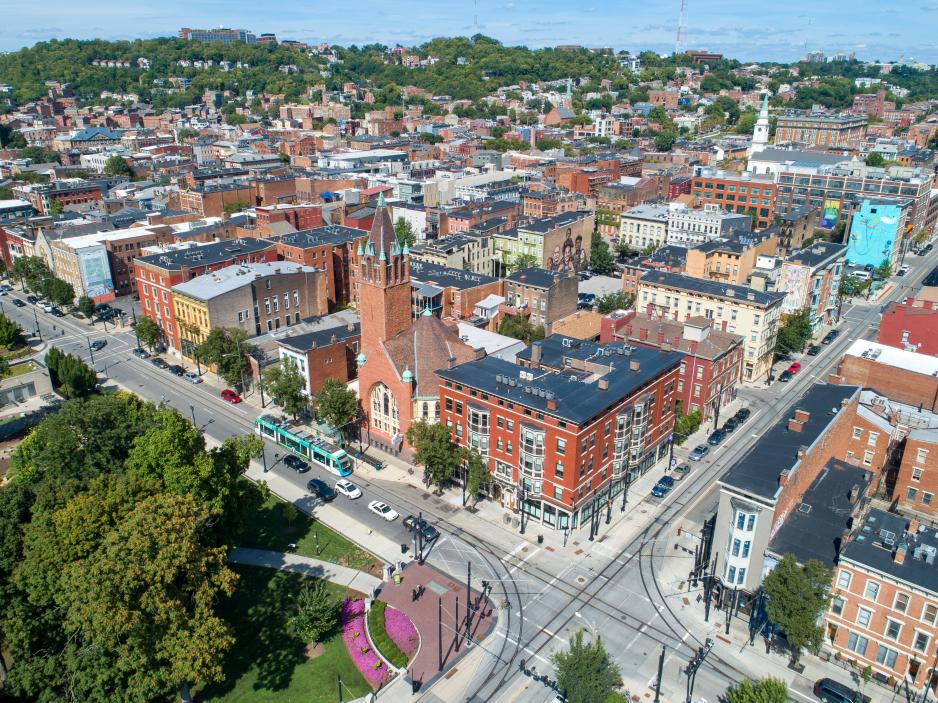Everyone is a pedestrian. Pedestrians are defined as any person on foot, walking, running, jogging, hiking, in a wheelchair, sitting, or lying down. Places that are safe, comfortable, and engaging for pedestrians are not only pleasant: they make transit a much more attractive choice.
Attention to human-scale details is essential to making places that people will use and enjoy, and that will begin to illustrate the viability of less auto-dependent models of development. All aspects of planning for the physical environment must involve consideration of the pedestrian.
Sites and Buildings
Building and site design can contribute to creating places for people that support pedestrians, increase transit use, and land use more efficiently.
Building Design
Different building types make different contributions to the built environment. Buildings, in addition to having character, should be conceived as participants in the production of city form and city districts rather than simply as discrete objects.
Development Projects
Projects designed to integrate well with other developments, nearby amenities, and transportation resources can become effective building blocks of good districts and neighborhoods — and can revive and enliven areas that have experienced decline.
Corridors
Corridors represent a tremendous reservoir of underutilized land where infill, reuse, and redevelopment efforts can be focused.
Case Studies
- San José, CA, USA – Santana Row Development
- Seattle, WA, USA - University District Urban Design Guidelines
